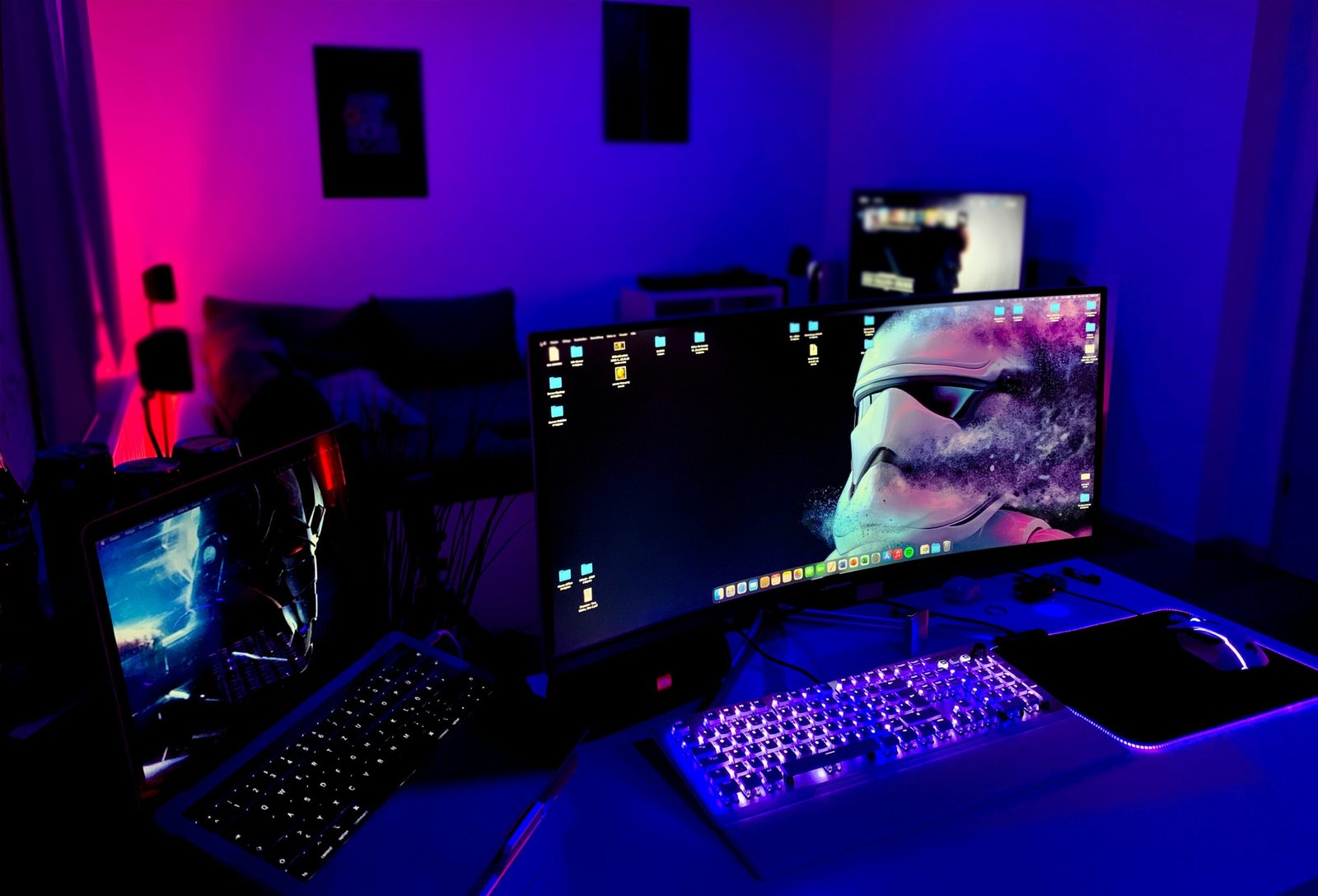Which Screen Type is Better: LCD, LED, or OLED?
“`html
Introduction to Screen Technologies
In the realm of modern displays, the primary types of screen technologies utilized are LCD, LED, and OLED. These acronyms stand for Liquid Crystal Display, Light Emitting Diode, and Organic Light Emitting Diode, respectively. Each of these technologies has its own unique mechanisms for displaying images, and their development marks significant milestones in display innovation.
First, let’s delve into Liquid Crystal Display (LCD) technology. LCDs use liquid crystals that are sandwiched between two layers of glass or plastic. These crystals do not emit light directly; instead, they modulate light that is provided by a backlight. The backlight usually comprises fluorescent lamps or, more commonly today, LEDs. The working principle involves adjusting the electric current passing through the liquid crystals to control the passage of light, thereby forming images on the screen.
Moving on to LED (Light Emitting Diode) technology, it is essentially an extension of LCD technology. In LED screens, the backlighting is done using light-emitting diodes instead of traditional fluorescent lights. This switch brings several advantages, such as better energy efficiency, thinner display panels, and improved brightness and color accuracy. The LEDs can be arranged as edge-lit or full-array, impacting the overall image quality by enhancing contrast and providing more vibrant colors.
Finally, Organic Light Emitting Diode (OLED) technology represents a significant leap forward in display screens. OLEDs function without the need for a backlight, as each pixel in an OLED display is a self-emissive organic material that emits light when an electric current is applied. This results in deeper blacks, higher contrast ratios, and more precise color rendering. OLED technology was pioneered to address some of the limitations of LCD and LED screens, such as color accuracy and response times.
Understanding these screen technologies is crucial for making informed decisions when selecting a display. Each type offers distinct benefits and is suited for different applications, driving the continuous evolution in the field of display technology.
“`
Performance Comparison
When evaluating the performance of LCD, LED, and OLED screens, several key factors come into play, including brightness, contrast ratio, color reproduction, refresh rates, and viewing angles. Each technology exhibits unique strengths and potential limitations, making them suitable for different applications ranging from gaming and multimedia consumption to professional use.
LCD (Liquid Crystal Display) technology, widely known for its affordability and widespread use, generally offers decent brightness levels and color reproduction. However, traditional LCDs often fall short in terms of contrast ratio due to their reliance on backlighting, which can result in weaker blacks. Furthermore, LCD screens can exhibit limited viewing angles, causing color shifts and reduced image quality when viewed from off-center angles.
LED (Light Emitting Diode) screens, in essence, are a subtype of LCD monitors that utilize LED backlighting. This enhancement typically improves brightness and contrast over standard LCDs. The ability to achieve local dimming through LED array backlighting helps mitigate some of the issues related to contrast, producing deeper blacks and better overall performance in dark environments. The improved color reproduction and reduced power consumption add to the appeal of LED screens, making them a popular choice for both multimedia consumption and casual gaming.
On the cutting edge of screen technology, OLED (Organic Light Emitting Diode) stands out with superior performance characteristics. OLED screens offer exceptional contrast ratios, thanks to their ability to completely turn off individual pixels, resulting in true blacks. The color reproduction on OLED displays is generally considered excellent, with a wide color gamut and vibrant hues. Furthermore, OLED’s fast refresh rates and response times make it ideal for gaming, providing a smoother and more immersive experience. The inherent flexibility and superior viewing angles of OLED technology mean that image quality remains consistent, no matter the angle from which the screen is viewed.
In conclusion, the choice between LCD, LED, and OLED screens should be guided by the specific performance criteria most important to your use case. LCD screens provide a cost-effective option with good overall performance, particularly for everyday use. LED screens offer enhanced brightness and contrast, suitable for more immersive viewing experiences. OLED screens, while typically more expensive, deliver unparalleled performance across all major factors, making them the top choice for high-end gaming, professional applications, and demanding multimedia consumption.
Cost and Longevity
The cost implications and longevity of LCD, LED, and OLED screens are crucial factors for consumers when choosing a display type. Initially, the purchase cost of LCD screens tends to be lower compared to LED and OLED screens. This affordability makes LCD an attractive option for budget-conscious buyers. However, it’s important to note that LED screens, although slightly more expensive than LCD, offer improved energy efficiency, leading to reduced recurring costs in terms of energy consumption over time.
OLED screens, on the other hand, generally command the highest upfront cost among the three screen types, reflecting their advanced technology and superior display quality. Despite the higher initial expense, OLED screens may present cost benefits in specific applications where their unique attributes, such as higher contrast ratios and deeper blacks, are highly valued. Energy consumption for OLED panels can vary, but typically, they consume less power for scenes with black or dark backgrounds due to their emissive nature.
When examining the longevity of each screen type, LCD and LED screens exhibit similar performance, often lasting between 50,000 to 100,000 hours under regular usage conditions. This durability is partly due to their reliance on backlighting systems, which have proven to be robust over time. OLED screens, while known for their outstanding display quality, face potential longevity issues such as burn-in, where static images can leave permanent impressions on the screen. This risk, however, has been mitigated in recent years with technologies that minimize burn-in effects, improving their practical lifespan significantly.
Maintenance and durability also differ among these screen types. LCD and LED screens tend to be more resistant to image retention and can generally handle prolonged use without significant degradation in picture quality. OLED screens, despite their susceptibility to burn-in, benefit from ongoing advancements that enhance their resilience. User reviews and real-world experiences often highlight the exceptional picture quality of OLED screens, though users may need to observe certain usage guidelines to prolong their lifespan.
Overall, the choice between LCD, LED, and OLED should factor in not just the initial cost but also long-term implications such as energy use and durability. Each screen type offers distinct advantages and challenges, making it essential for consumers to weigh their specific usage needs and preferences.
User Experience and Practical Applications
When evaluating user experience across different screen types—LCD, LED, and OLED—several factors come into play, such as ease of use, eye strain, ambient light handling, and overall user satisfaction. Each screen technology offers unique advantages and challenges in various practical applications, whether it be for smartphones, laptops, TVs, or monitors.
LCD screens are known for their reliability and are commonly used in mid-range smartphones and budget laptops. They offer decent image quality and are often less expensive. However, in terms of ease of use, one common drawback is that LCDs tend to produce a slight glare and could struggle under direct sunlight, making outdoor usage a bit cumbersome. Additionally, prolonged exposure to LCDs may sometimes lead to eye strain due to their lower contrast ratios compared to other screen types.
LED screens, essentially an advanced form of LCD technology with LED backlighting, provide better brightness and energy efficiency. They excel in environments with varying light conditions, thanks to their enhanced brightness levels and improved contrast. These screens are predominantly found in TV sets and computer monitors. Users often report a better viewing experience with less eye strain when using LED screens, especially in well-lit rooms.
OLED screens represent the pinnacle of current display technology, utilized extensively in high-end smartphones, premium laptops, and top-tier TVs. The key feature of OLED displays is that they do not require backlighting, which allows for true blacks and offers superior contrast ratios that significantly reduce eye strain. Moreover, OLED screens perform exceptionally well under different lighting conditions, providing deep and vibrant colors even in ambient light. However, users should be cautious of potential burn-in issues, particularly with static images displayed for extended periods.
In summary, the choice among LCD, LED, and OLED screens largely depends on personal preferences and specific use cases. LCDs offer cost-effective solutions with reliable performance, making them ideal for everyday devices. LED screens are preferable for users seeking better brightness and energy efficiency, especially for larger displays like TVs and monitors. OLEDs, with their exceptional color accuracy and contrast, are perfect for those looking for premium display quality, despite their higher cost and specific care needs.







